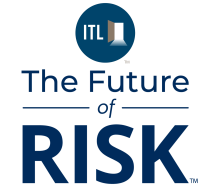AI is reshaping insurance with high-resolution modeling that allows for more tailored, risk-appropriate solutions—even in high-risk geographies.
Climate change is no longer a future threat—it's a present-day crisis. Across the globe, extreme weather events tell a devastating story of this new reality. In the U.S. alone, more than 52,477 wildfires burned through 8.4 million acres of land, while 27 climate disasters each caused more than $1 billion in damages in 2024.
This pattern of destruction isn't isolated—from bushfires in Australia to floods in Europe and typhoons in Asia, communities worldwide are feeling the impact, with 2024 data showing that 97% of all insured losses stemmed from weather-related catastrophes. And with NASA reporting an uptick in carbon dioxide, global temperature and methane levels (and that 2024 was the warmest year on record) it's no surprise insurance companies are becoming increasingly concerned about protecting their policyholders and preserving their own business legacies.
As traditional approaches prove inadequate in the face of this escalating crisis, the insurance industry finds itself at a crossroads. So how can insurers move forward when traditional risk assessment models lag behind the changing climate reality?
The Rising Challenge: Market Retreat Amid Climate Volatility
As climate risk becomes more localized and unpredictable, certain regions are being deemed "uninsurable," even if they were previously profitable, causing an insurance exodus that leads to lost revenue, erodes trust in the industry and leaves vulnerable communities without coverage. In some cases, brokers can no longer offer relevant products, and customers are left underinsured or uninsured, with no one to turn to.
Without the right tools to assess and visualize climate impacts, insurers can struggle with inaccurate premium pricing and coverage gaps, inefficient underwriting with elevated exposure risk, overburdened claims operations during extreme events, delayed disaster response and customer dissatisfaction.
Artificial Intelligence is bringing clarity to what was once chaos and helping insurance enterprises respond to climate events—and more adequately prepare for them, with speed, accuracy and foresight.
How AI Is Transforming Climate Risk Management
AI isn't just a tool—it's a game-changer. Advanced climate risk modeling solutions marry cutting-edge AI, climate science and insurtech excellence to provide an accurate classification of extreme weather events using adaptive models to enhance response with early warning systems, hazard monitoring and data-driven insights for insurance enterprises. When combined with geospatial intelligence, environmental data simulation technology, continuous portfolio risk assessment and dynamic price adjustments based on evolving risks, AI is helping the insurance industry move from reactive to proactive decision-making across the entire insurance value chain.
Post-event recovery can be the most chaotic phase of all. AI simplifies and speeds this process with automated damage detection via satellite or drone imagery. AI-powered fraud detection during claim reviews easily prioritizes claims based on real-time impact modeling and can assist with resource prioritization and allocation. The result? Faster claims processing, reduced fraud, and improved customer experience.
Who Benefits From AI in Climate Risk Modeling?
The adoption of AI-powered climate risk solutions doesn't just enhance operations—it delivers tangible benefits across the insurance ecosystem, from insurers to brokers to the policyholder.
Insurers see smarter risk segmentation for more targeted products, faster claims handling and reduced fraud, and the ability to re-enter high-risk or previously uninsurable markets with data-backed confidence.
Brokers are finding enhanced risk insight, which helps them provide more personalized advisory services, confidence in offering relevant products in vulnerable geographies, and stronger client relationships through value-driven engagement.
Policyholders are seeing clearer, more transparent coverage terms and more affordable, tailored coverage—even in risk-prone areas. AI also provides them peace of mind with real-time risk alerts and better, faster claims support.
The Powerful Way Forward
The climate is changing faster than traditional insurance models can adapt. But AI-driven climate risk modeling offers a powerful way forward. This isn't just about better data—it's about redefining how insurance enterprises anticipate, adapt to and respond to risk. With artificial intelligence in insurance, we are building a more resilient, responsive future—one where technology empowers the insurance industry, and their policyholders, to thrive in the face of climate uncertainty.






